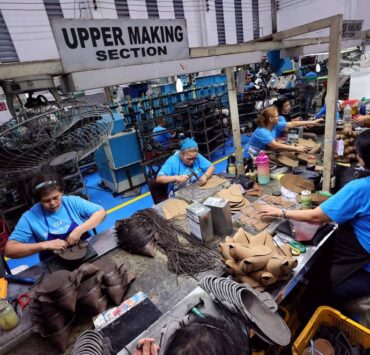Why our teachers choose to leave

Education secretary Juan Edgardo ”Sonny” Angara has said that a newly formed educational cluster will identify factors explaining why thousands of teachers leave to seek greener pastures abroad at an alarming rate.
Aside from the most obvious reason, other factors can be identified by taking a look at the trend of labor export. To determine which professionals would leave the country in the next 10 to 15 years, we can look at the number of enrolled students based on discipline groups.
Education, medicine enrollees
Statistics provided by the Commission on Higher Education from academic years 2010 to 2011 and 2019 to 2020 show a growing number of enrollment for teacher education programs—from 404,261 in 2010 to 2011 to 671,421 in 2019 to 2020. Compare this to the decreasing numbers in the medical and allied profession which had its boom in the early 2000s, from 365,715 in 2010 and 2011 down to 234,204 in 2019 and 2020.
This can be explained by a number of reasons, such as the rise in teacher education programs in response to universalizing basic and tertiary education, and the implementation of the K-12 program.
Similar to the magnitude of nurses recruited abroad in the early 2000s, our teachers are being sought overseas due to shortages and the exemplary work ethic that Filipino professionals have to offer. In the context of the Philippines, the exodus of teachers is an opportunity for our neighboring East and Southeast Asian countries to catch up with the West by recruiting our teachers as language and assistant language mentors.
With other countries offering more suitable and humane treatment and benefits, it is no wonder that our teachers would rather leave than serve their own country, where opportunities are scarce and the threat of manipulation, toxicity, rigid bureaucracy, and patronage remains.
Exodus, social mobility
The exodus of professionals is not entirely new. Filipino nurses started this phenomenon in the 1950s when the United States recruited the best and the brightest in medical and allied professions to fill up its shortage. As a lower-middle-income and developing country, policies to support and strengthen this labor export were put in place instead of the government creating reforms for local empowerment, employment, and national development. It is no longer a case of brain drain, but a case of a depleted brain where human capital is used up.
The end goal is social mobility, or enabling professionals to greatly improve their socioeconomic status and well-being.
However, this also reflects the limitation of individual aims for development, which is evident since many of the best and the brightest minds of this nation choose to leave. Social mobility can only do so much since it is still powerless in addressing the structural problems of our country.
However, when professionals who have uplifted themselves through social mobility go back to their country to help their communities, that can be an opportunity for collective development at the local level.
I can see that in the next five to 10 years, the trend of labor export will continue to shift, with another set of professionals leaving. If massive and multi-layered reforms are not put in place to empower professionals and our skilled workforce, the country will continue to bleed. –JUNIESY ESTANISLAO
Juniesy Estanislao is a junior high school teacher at Barangka National High School and a lecturer at the Department of Filipino, De La Salle University.

















